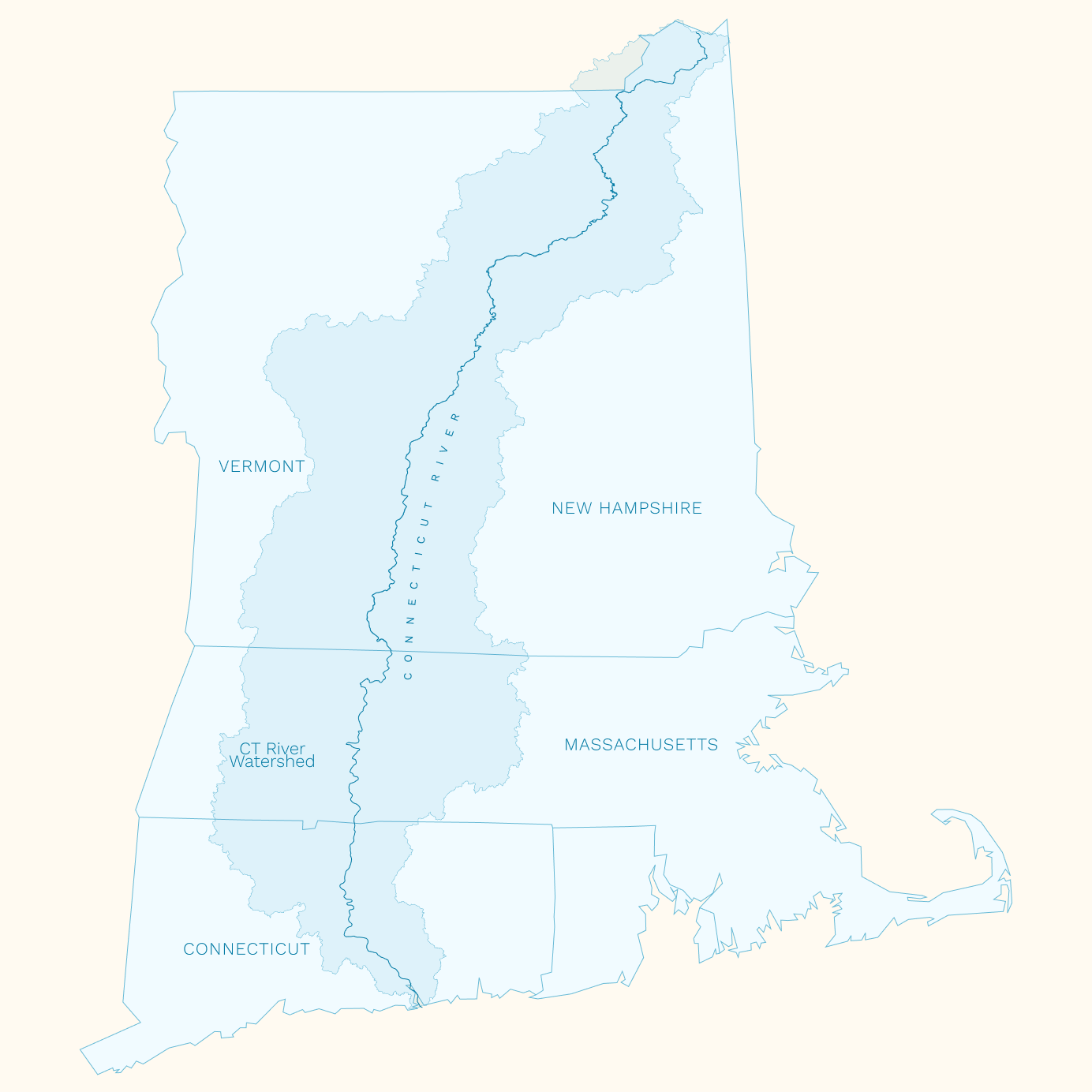The Connecticut River spans 410 miles across four states
Home to millions of fish and other species, New England’s longest river runs from the Canadian border through New Hampshire, Vermont, Massachusetts and Connecticut and then all the way down to the Long Island Sound.
The Connecticut River watershed encompasses 11,260 square miles, with 148 tributaries, including 38 major rivers and numerous lakes and ponds. Its waters, woods, and wetlands provide nationally recognized fish and wildlife habitat.
In 1997 the Silvio O. Conte National Fish and Wildlife Refuge was established to conserve, protect and enhance the abundance and diversity of native plant, fish and wildlife species and the ecosystems on which they depend throughout the 7.2 million acre Connecticut River watershed. The refuge was designed to include the entire Connecticut River watershed because legislators realized that, in order to protect migratory fish and other aquatic species, there was a need to protect the whole river system and its watershed. The health of any aquatic ecosystem is linked to the health of the whole watershed upstream.

A healthy river won’t happen overnight
After decades of neglect, the native populations of migratory fish are making a comeback in the Connecticut River watershed. Progress, however, takes time. Efforts that began in the 1960s-80s have greatly influenced the health and return of these native species. Efforts today work to ensure that populations continue to increase into the future.
Habitat degradation:
what’s gone wrong?
Decades of dam building, pollution and overfishing led to the decimation of native migratory fish populations in the Connecticut River. The loss of primary habitat, whether it became unreachable, or simply unsuitable, has continued to suppress the recovery of these populations. Restoring habitat and removing dams is a step towards ecological abundance.
Habitat restoration:
what we’re doing today
Effective habitat restoration can take many forms. When possible, removal of dams and culverts opens rivers and streams for fish, while fish passage structures allow movement when removal is not viable. Planting trees along rivers shade water for fish and provide important inputs into the aquatic food chain.
Regional efforts:
how you can help
Work throughout the watershed is completed by many state, federal, tribal, nonprofit, and community partners working together to protect and promote fish populations. Community involvement in the form of tree planting, fish counting and public outreach is necessary for river restoration.